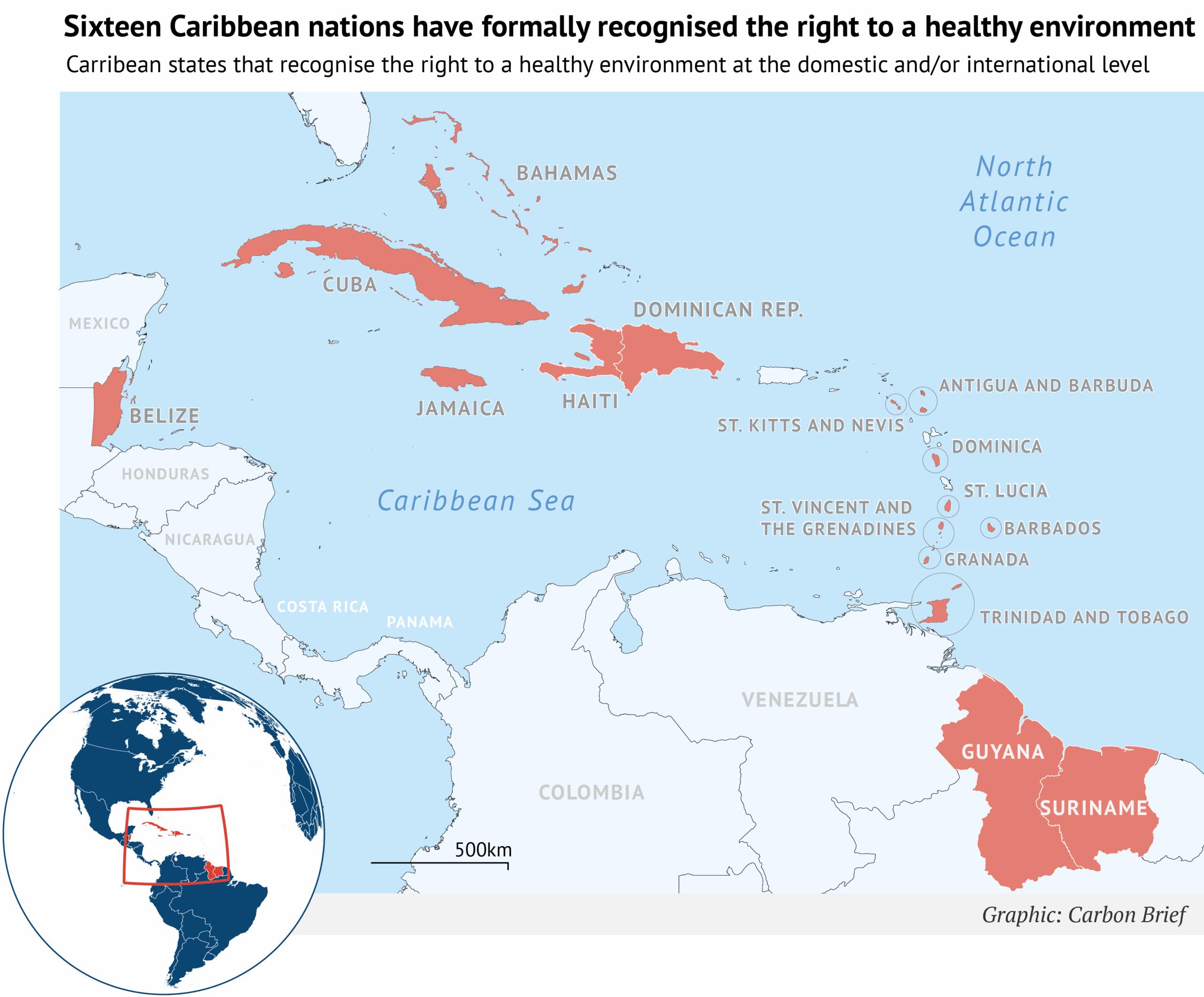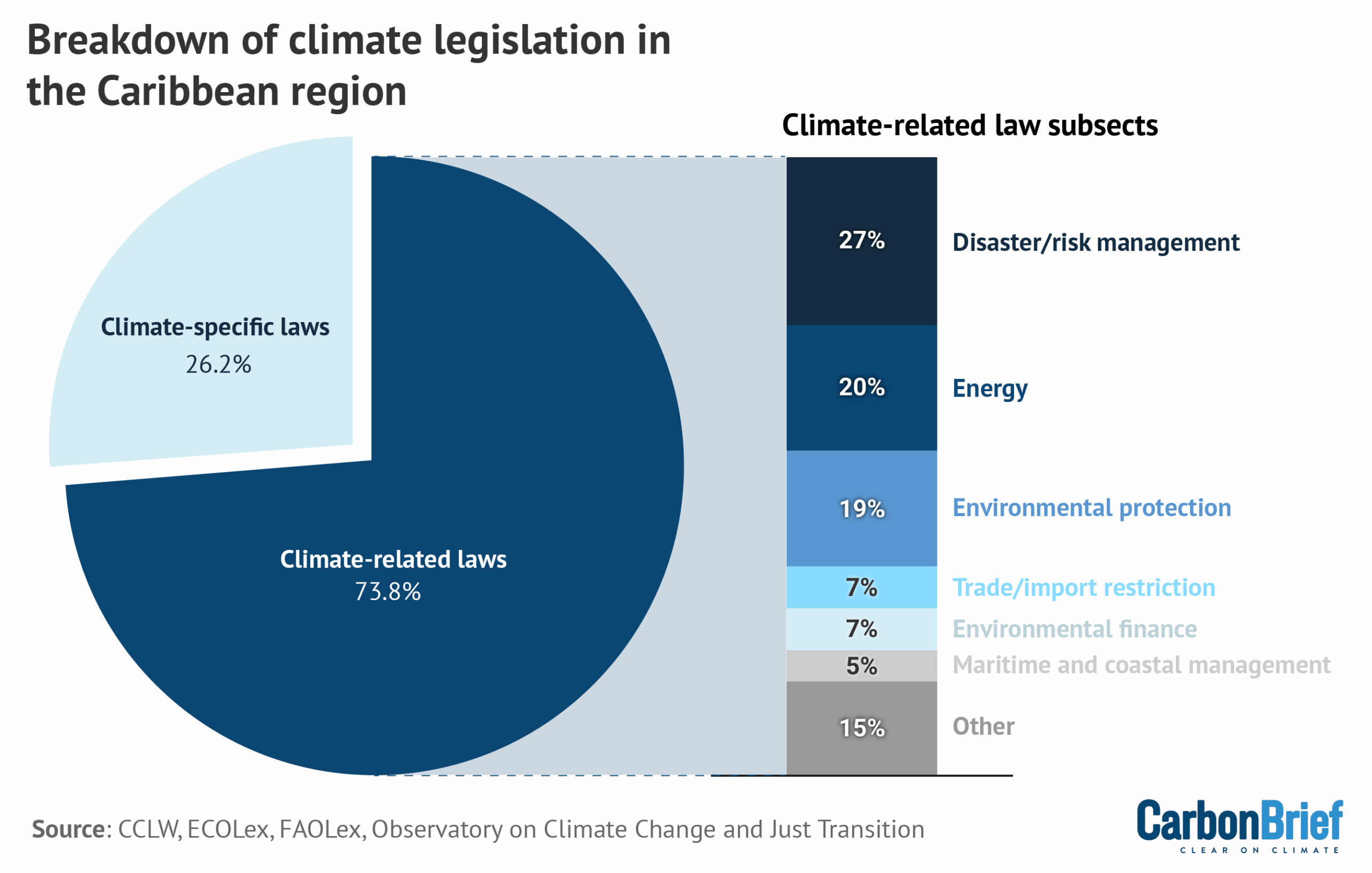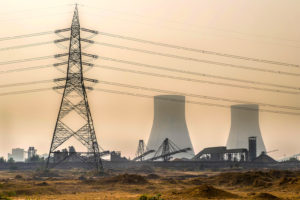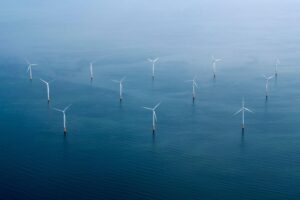Welcome to Carbon Brief’s China Briefing.
China Briefing handpicks and explains the most important climate and energy stories from China over the past fortnight. Subscribe for free here.
Key developments
Hottest month in history
RECORD HEAT: July 2024 was China’s “hottest month in observed modern history” (since records began in 1961), in a record coinciding with the world experiencing its hottest day on 22 July, Reuters reported. Every province across the country saw average temperatures for July rise year-on-year, with Guizhou, Yunnan, Hunan, Jiangxi and Zhejiang ranking highest, it said, adding that the record were unusual because “the El Nino climate pattern…ended in April, but temperatures have not abated”. State broadcaster CCTV said on 4 August that several provinces had experienced temperatures between 40-43.9C, warning residents to “reduce” time spent outdoors. Reuters also said that rising temperatures “sharply pushed up demand for power to cool homes and offices” and “stoked fears of damage to rice crops”, adding that the city of Hangzhou “banned all non-essential outdoor lighting and light shows this week to conserve energy”.
-
Sign up to Carbon Brief’s free “China Briefing” email newsletter. All you need to know about the latest developments relating to China and climate change. Sent to your inbox every Thursday.
RECORD FLOODS: According to the state-supporting Global Times, China has “experienced 25 numbered flood events” this year, the highest number since records began in 1998. The newspaper said that, according to Ma Jun, director of the Beijing-based Institute of Public and Environmental Affairs, “[due to] global climate change, extreme weather events are increasing, which increases the difficulty of forecasting [rainfall and floods]”. Another CCTV report cited the China Meteorological Administration saying that the country experienced two typhoons and recorded “13.3% higher than average” rainfall in July. Typhoon Gaemi killed 30 people and left 35 missing in Zixing, Hunan province, Reuters said. State news agency Xinhua stated that the typhoon also caused “damage” in the coastal provinces of Fujian and Liaoning, affecting 766,900 and 60,000 residents, respectively. Xinhua reported the Chinese government called for “proactive” flood control and for “disaster relief funds [to] be allocated promptly”. The state-sponsored outlet China News said the Ministry of Water Resources issued 649m yuan ($90m) to support “flood relief” in 14 affected provinces.
New renewable energy targets and ‘green electricity’ trading policy
NEW RENEWABLE TARGETS: Regulators published provincial targets for 2024-25 under China’s renewable portfolio standards (RPS) on 2 August, reported China Power. The targets, for the renewable share of electricity supply, increased by more than 3 percentage points year-on-year in most provinces, according to analysis published by financial outlet Yicai, “compared with a 1 to 2 points jump in previous years”.
NEW ALUMINIUM TARGETS: In order to help meet the targets, regulators also issued renewable-energy goals for the aluminium industry in each province for the first time, China Power said. Reuters reported that Shandong, China’s biggest aluminium producer, is “set a target for renewables to account for 21% of the energy used to produce the metal”. The targets in Inner Mongolia and Yunnan province, which are also major aluminium producers, are set at 29% and 70%, respectively, added the newswire. China Power said that the “green electricity consumption” in the aluminium industry will be “calculated based on ‘green electricity certificates’ (GECs)” – a scheme that allows electricity generated by non-fossil fuels to be traded between producers and buyers. (See Carbon Brief’s China Briefing of 24 August 2023 for background on China’s GECs.)
‘GREEN ELECTRICITY’ TRADING: While announcing this year’s targets, the government also issued new rules for trading “green electricity” for the “medium to long term”, BJX News reported. The document says the trade via GECs should not be subject to price limits or set prices and, instead, work as a market-based system, unless “clearly stipulated by the state”. Trading should take place “mainly within provinces” with strong wind and solar resources, and can “gradually expand to other qualified renewable energy sources” when “conditions are ripe”, added the outlet.
CARBON MARKET INCLUSION: Despite an announcement in 2023 that GECs may be included in the carbon market in the future, China Power Enterprise Management magazine said that, currently, the GECs “have almost no impact on the national carbon market”, because GECs “is limited to low indirect emissions from electricity”. If energy-intensive industries are included in the carbon market, GECs can cover around 19% of carbon emissions in China, added the magazine.
No mention of reform in new power system plan
UPGRADING THE SYSTEM: BJX News reported that China has issued a plan to upgrade its power system to “promote the construction of a new type of power system” between now and 2027. The outlet said the new system should be “safe, stable, cost-effective, flexible” and support the addition of more “clean and low-carbon” resources. A “key effect” of the plan, according to the National Energy Administration, is to improve the transmission of renewable energy from the remote desert bases to cities “at a large scale”, added the outlet.
‘NEW-GENERATION’ OF COAL: Another BJX News article stated that the plan also proposes to “carry out experimental demonstrations of new-generation coal power” and explore a development path for coal “that is compatible with the development of a ‘new type’ power system”. Economic news outlet Jiemian also noted that the call to guarantee stable power supply “ranked at the top of the nine special actions outlined by the action plan”. (A new report by Ember, covered by Carbon Brief, stated that increasing investments in low-carbon energy by state-owned enterprises is pushing coal into “decline”.)
REFORM OMITTED: Reuters quoted Xuewan Chen, energy transition analyst at LSEG, saying the plan “focuses on building a more flexible power grid to better manage the [energy] transition”, but that the document did not mention “power market reform and the creation of a competitive power market to more effectively allocate resources”.
Solar industry woes continue
‘UPHEAVAL’: China’s domestic solar industry is in “upheaval” with wholesale prices falling by another 25% so far this year, after falling by almost half in 2023, the New York Times reported. It quoted Frank Haugwitz, a solar industry consultant, saying efforts by the Chinese government to rein in the industry’s expansion have been “too small to reduce China’s overcapacity”. Bloomberg said that an increasing number of Chinese solar manufacturers “are falling into restructuring or bankruptcy”, adding that “while bigger players like Longi have so far survived billions of yuan in losses by imposing production halts and layoffs, smaller companies have fewer ways to plug financial gaps”.
‘SEVERE OVERCAPACITY’: In a meeting of China’s Politburo at the end of July, state-run newspaper China Daily said, president Xi Jinping called for “strengthening industry self-regulation and preventing ‘involutional’ vicious competition”, adding that China should “strengthen the market mechanisms” to help with “inefficient production capacity”. The outlet did not report that any particular sectors were named during the meeting. Several days earlier, Bloomberg stated that Wang Bohua, head of the China Photovoltaic Industry Association, had called for “struggling solar manufacturers [to be pushed] to exit the market as soon as possible to reduce severe overcapacity”.
SOLAR SURGE: Elsewhere, BJX News reported that China added 134 gigawatts (GW) of new renewable capacity in the first six months of 2024, according to the National Energy Administration (NEA) – an increase of 24% year-on-year. It added that solar made up 102GW of the total. (Total US solar capacity stood at 139GW at the end of 2023.)
51.1%
The share of sales of “new energy vehicles” (NEVs) – which includes both battery electric vehicles and plug-in hybrids – in China in July, according to the China Passenger Car Association. The trade body added that NEV performance beat manufacturers’ expectations, which it attributed to a trade-in policy encouraging consumers to replace old cars.
Spotlight
China moves towards ‘dual-control of carbon’ with new work plan
China has released a plan that will set an absolute limit on its carbon dioxide (CO2) emissions for the first time, shifting to “dual control” of total CO2 emissions and carbon intensity instead of total energy use and energy intensity.
The document, outlining a timeline for China to construct this new system for carbon “dual-control”, will be a key element of the country’s strategy to meet its climate goals.
In this issue, Carbon Brief assesses the document’s implications for China’s future emissions targets.
Switching to dual-control of carbon
In 2016, Beijing established a set of targets for energy intensity – its energy consumption per unit of GDP – and total energy consumption, in a system known as the “dual-control of energy”.
Since 2021, the central government has called for replacing the “dual-control of energy” with “dual-control of carbon”, which would be comprised of targets for both carbon intensity and total carbon emissions. China has only ever set targets for CO2 intensity, not for total CO2 emissions.
This shift began taking shape on 2 August when the State Council, China’s top administrative body, released a “work plan” outlining the first concrete design of the new system.
The National Development and Reform Commission (NDRC), China’s primary economic planning body, told reporters at a press conference that the plan “establishes a clear direction” for developing renewable energy and “focusing on control of fossil-fuel energy consumption”.
Anticipating a 2030 peak?
According to the new plan, China aims to establish a “completed” statistics and accounting system for CO2 emissions by 2025. Components of this system include carbon footprint standards, a national database of greenhouse gas emission factors and other measurement and monitoring capabilities.
Between 2026 and 2030 – the period of the 15th five-year plan – China will replace current targets under “dual-control” of energy with a policy on “dual-control” of carbon that places “[carbon] intensity control as the main focus and control of the total amount [of carbon] as a supplement”.
This means that, under the new system, carbon intensity targets will remain binding and the cap on China’s total CO2 emissions will initially be a non-binding “supplement”.
In subsequent five-year plan periods, China will set a binding cap for total CO2 emissions, which will become the “key target” once China’s carbon peak is reached, with carbon intensity as a secondary target.
“The timeline here indicates policymakers still only aim to peak emissions by 2030, despite the clear likelihood that emissions will…peak much sooner,” Yao Zhe, global policy analyst for Greenpeace East Asia, said in a statement, adding that this shows China is still “underpromising”.
Li Shuo, director of the Asia Society Policy Institute’s China climate hub, told Carbon Brief that the ambiguity is intentional to allow policymakers “to further clarify when and how they want to make that switch [to an absolute cap]” after a peak is confirmed.
He added that policymakers’ “intrinsic inability” to predict the exact peaking timeline is the reason for setting two targets under the [new] dual-control system, as, once it happens, China “can just switch to the other [metric]”.
‘Rolling up its sleeves’
The shift from focusing on “dual-control of energy” to “dual-control of carbon” is a “change from process control to results-oriented management that will compel industries to adopt green technologies”, according to Qi Qin, China analyst at the Centre for Research on Energy and Clean Air.
China is falling short of its existing carbon intensity target, she said, making it important to “accelerate” its energy transition and clean energy buildout – priorities that are emphasised in the work plan.
Local governments are tasked with developing more specific targets, taking “local conditions” into account. Actions are also outlined for central government departments, industry associations and enterprises.
The central government subsequently released a related action plan to issue 70 national standards in areas including carbon footprints, CO2 emissions reduction, energy efficiency and carbon capture, utilisation and storage.
When formulating targets, the document urges policymakers to consider “economic development, energy security [and] normal production”, pointing to existing anxieties around maintaining stable access to power, which the country currently mostly relies on fossil fuels to provide.
Li told Carbon Brief:
“This is the Chinese government rolling up its sleeves and trying to make quite an important switch…Folks have been advocating for China to really reduce its emissions in absolute terms for almost two decades. This is the mechanics of how this will happen – them actually making this switch and trying to make sure this is done in the right way by, for example, disaggregating [targets] to the local level, getting the private sector involved and trying to build up the carbon accounting system from the bottom up.”
Implications for China’s NDC targets
As well as meeting domestic policy needs, the NDRC said, a dual-carbon control system is “conducive” to setting the country’s new international climate pledge (nationally determined contribution, NDC), and supports the image of China as “a responsible large country that is actively responding to global climate change”.
Yao said Greenpeace expects that China’s next NDC will include a carbon emission reduction goal for 2035.
Li told Carbon Brief that China’s international pledge will then drive domestic targets, due to “how the timeline works”. He added: “The NDC [target] for 2035 has to be communicated in 2025, [looking] 10 years into the future…The job of the five-year plans for the next two five-year periods [will then be] to align with that international pledge.”
Watch, read, listen
DRIVING FORCE: A report released today by Ember found that global wind capacity will double by 2030, with the majority of additions being installed in China.
SUPPORTING INNOVATION: Huang Kunming, governor of Guangdong province, wrote in the People’s Daily about the need to boost innovation to meet China’s development needs, including to “accelerate the green transformation of development”.
SUPPLY CHAINS: A Boston University Global Development Policy Center study found commercial ties between China and Latin American and Caribbean countries have broadened from solely minerals and agriculture to include the automotive, energy and transport sectors.
TACKLING METHANE: The California-China Climate Institute hosted a webinar on the state of agricultural methane emissions and bilateral cooperation between the US and China, building on a recently released report.
Captured

CO2 emissions in China fell by 1% in the second quarter of 2024, the first quarterly fall since the country re-opened from “zero-Covid” lockdowns, new analysis for Carbon Brief found. The reduction was driven by the surge in clean energy additions, which is pushing fossil fuel power into reverse – although the shift is being somewhat diluted by rapid energy demand growth in the coal-to-chemicals sector.
New science
The dominant warming season shifted from winter to spring in the arid region of Northwest China
npj Climate and Atmospheric Science
A new paper investigated the “seasonal asymmetry” in warming in the arid region of northwest China – which has experienced “significantly higher” warming than the global average, according to the paper. The authors used station and reanalysis data to investigate seasonal temperature changes in the region. They found that “the dominant season of temperature increase shifted from winter to spring”. The paper added that the main reason for warming in spring was a decrease in cloud cover, while a strengthening Siberian High was mainly responsible for driving winter cooling.
Carbon emissions from urban takeaway delivery in China
npj Urban Sustainability
Transport-related emissions from food deliveries in Chinese cities “surged” from 0.31m tonnes of CO2 equivalent (MtCO2e) in 2014 to 2.74MtCO2e in 2021, a new study found. The authors analysed the rise in emissions from food deliveries and explored possible policies to mitigate these emissions in the future. They estimated that by 2035, transport-related emissions from food deliveries will rise to 5.94MtCO2e. However, if motorcycles were replaced with electric bikes and traffic routes were optimised, “it is possible to mitigate such GHG emissions by 4.39-10.97MtCO2e between 2023 and 2035,” they said.
China Briefing is compiled by Wanyuan Song and Anika Patel. It is edited by Wanyuan Song and Dr Simon Evans. Please send tips and feedback to china@carbonbrief.org
The post China Briefing 8 August: Record extreme weather; First quarterly CO2 fall since Covid; ‘Dual control’ of carbon emissions appeared first on Carbon Brief.
Greenhouse Gases
DeBriefed 10 October 2025: Renewables power past coal; Legacy of UK’s Climate Change Act; Fukushima’s solar future
Welcome to Carbon Brief’s DeBriefed.
An essential guide to the week’s key developments relating to climate change.
This week
Renewables overtake coal
‘HISTORIC FIRST’: Renewables have overtaken coal to become the world’s leading source of electricity for the first six months of this year in a “historic first”, BBC News said. The analysis, from the thinktank Ember, found the world generated “almost a third” more solar power in the first half of the year, compared with the same period in 2024, while wind power grew by “just over 7%,” reported the Guardian.
HEAVY LIFTING: According to the report, China and India were “largely responsible for the surge in renewables”, while the US and Europe “relied more heavily on fossil fuels,” the Guardian wrote. China built more renewables than every other country combined in the first half of this year, the newspaper added.
CONTINENTAL SHIFTS: A second report from the International Energy Agency (IEA) predicted a “surge” in global wind and solar capacity by 2030, but shaved 5% off its previous forecast, the Financial Times said. The IEA revealed that India is set to become the second-largest growth market for renewables after China, “with capacity expected to increase 2.5 times by 2030”, Down to Earth reported. The IEA also upped its forecast for renewables in the Middle East and north Africa by 23%, “helped by Saudi Arabia rolling out wind turbines and solar panels”, but halved the outlook for the US, the FT noted.
Around the world
- EV BOOM: Sales of electric and hybrid cars made up “more than half” of all new car registrations in the UK last month, a new record, according to data from the Society of Motor Manufacturers, reported BBC News.
- BANKING COLLAPSE: A global banking alliance launched by the UN to get banks to slash the carbon footprint of their loans and investments and help drive the transition to a net-zero economy by 2050 has collapsed after four years, Agence France-Press reported.
- CUTS, CUTS, CUTS: The Trump administration plans to cut nearly $24bn in funding for more than 600 climate projects across the US, according to documents reviewed by the Wall Street Journal.
- PEOPLE POWER: A farmer, a prison guard and a teacher were among those from the Dutch-Caribbean island Bonaire who appeared at the Hague on Tuesday to “accuse the Netherlands of not doing enough to protect them from the effects of climate change”, Politico reported.
400,000
The number of annual service days logged by the US National Guard responding to hurricanes, wildfires and other natural disasters over the past decade, according to a Pentagon report to Congress, Inside Climate News reported.
Latest climate research
- Politicians in the UK “overwhelmingly overestimate the time period humanity has left to bend the temperature curve”, according to a survey of 100 MPs | Nature Communications Earth and Environment
- Fire-driven degradation of the Amazon last year released nearly 800m tonnes of CO2 equivalent, surpassing emissions from deforestation and marking the “worst Amazon forest disturbance in over two decades” | Biogeosciences
- Some 43% of the 200 most damaging wildfires recorded over 1980-2023 occurred in the last decade | Science
(For more, see Carbon Brief’s in-depth daily summaries of the top climate news stories on Monday, Tuesday, Wednesday, Thursday and Friday.)
Captured

The UK’s Climate Change Act, landmark legislation that guides the nation’s response to climate change, is increasingly coming under attack from anti-net-zero right-leaning politicians. In a factcheck published this week, Carbon Brief explained how the UK’s Climate Change Act was among the first comprehensive national climate laws in the world and the first to include legally binding emissions targets. In total, 69 countries have now passed “framework” climate laws similar to the UK’s Climate Change Act, with laws in New Zealand, Canada and Nigeria among those explicitly based on the UK model. This is up from just four when the act was legislated in 2008. Of these, 14 are explicitly titled the “Climate Change Act”.
Spotlight
Fukushima’s solar future
This week, Carbon Brief examines how Fukushima helped to recover from nuclear disaster by building solar farms on contaminated farmland.
On 11 March 2011, an earthquake off the pacific coast of Japan caused 15m-tall waves to crash into the eastern region of Tōhoku, killing 19,500 people and injuring a further 6,000.
In the aftermath, flooding at the Fukushima Daichi nuclear power plant caused cooling systems to fail, leaching radioactive contaminants into the soil and leading to a major nuclear incident.
Some 1,200km2 around the site was restricted and up to 100,000 people were evacuated – in some cases forever.
In the years following, Japan entered a fraught debate about nuclear energy.
In 2010, nuclear power provided 25% of Japan’s electricity, but, in the years following the disaster, its 54 nuclear reactors were taken offline.
Successive governments have fought over reintroducing nuclear power. Today, some 14 reactors are back online, 27 have been permanently closed and another 19 remain suspended. (Japan’s newly-elected prime minister Sanae Takaichi has promised to make nuclear central to her energy strategy.)
Against this backdrop, Fukushima – a prefecture home to 1.8 million people – has emerged as a surprise leader in the renewables race.
In 2014, the Fukushima Renewable Energy Institute (FREA) opened with the twin goals of promoting research and development into renewable energy, while “making a contribution to industrial clusters and reconstruction”.
That same year, the prefecture declared a target of 100% renewable power by 2040.
Contaminated land
“A lot of these communities, I know, were looking for ways to revitalise their economy,” said Dr Jennifer Sklarew, assistant professor of energy and sustainability at George Mason University and author of “Building Resilient Energy Systems: Lessons from Japan”.
Once evacuation orders were lifted, however, residents in many parts of Fukushima were faced with a dilemma, explained Skarlew:
“Since that area was largely agricultural, and the agriculture was facing challenges due to stigma, and also due to the soil being removed [as part of the decontamination efforts], they had to find something else.”
One solution came in the form of rent, paid to farmers by companies, to use their land as solar farms.
Michiyo Miyamoto, energy finance specialist at the Institute for Energy Economics and Financial Analysis, told Carbon Brief:
“The [Fukushima] prefecture mapped suitable sites early and conducted systematic consultations with residents and agricultural groups before projects were proposed. This upfront process reduced land-use conflicts, shortened permitting timelines and gave developers clarity.”
As a result, large-scale solar capacity in Fukushima increased to more than 1,300 megawatts (MW) from 2012 to 2023, according to Miyamoto. Moreover, installed renewable capacity now exceeds local demand, meaning the region can run entirely on clean power when conditions are favourable, Miyamoto said.
Today, aerial pictures of Fukushima reveal how solar panels have proliferated on farmland that was contaminated in the nuclear disaster.

Charging on
Last year, 60% of Fukushima’s electricity was met by renewables, up from 22% in 2011. (The country as a whole still lags behind at 27%.)
And that is set to grow after Japan’s largest onshore windfarm started operations earlier this year in Abukuma, Fukushima, with a capacity of 147MW.
The growth of solar and wind means that Fukushima is already “ahead of schedule” for its 2040 target of 100% renewable power, said Miyamoto:
“The result is a credible pathway from recovery to leadership, with policy, infrastructure and targets working in concert.”
Watch, read, listen
OVERSHOOT: The Strategic Climate Risks Initiative, in partnership with Planet B Productions, has released a four-part podcast series exploring what will happen if global warming exceeds 1.5C.
DRONE WARFARE: On Substack, veteran climate campaigner and author Bill McKibben considered the resilience of solar power amid modern warfare.
CLIMATE AND EMPIRE: For Black history month, the Energy Revolution podcast looked at how “race and the legacies of empire continue to impact the energy transition”.
Coming up
- 12 October: presidential elections, Cameroon
- 13-14 October: Pre-COP, Brasilia, Brazil
- 13-18 October: World Bank Group/IMF annual meetings, Washington DC
- 14-17 October: 2nd extraordinary session of the Marine Environment Protection Committee at the International Maritime Organisation, London
- 15-16 October: Circle of Finance Ministers report
Pick of the jobs
- Buckinghamshire Council, principal climate change officer | Salary: £49,354-£51,759. Location: Aylesbury, Buckinghamshire
- Sustainable NI, sustainable business lead | Salary: £60,000. Location: Belfast, Northern Ireland
- Dialogue Earth, South Asia managing editor | Salary: £1,875 per month. Location: South Asia
DeBriefed is edited by Daisy Dunne. Please send any tips or feedback to debriefed@carbonbrief.org.
This is an online version of Carbon Brief’s weekly DeBriefed email newsletter. Subscribe for free here.
The post DeBriefed 10 October 2025: Renewables power past coal; Legacy of UK’s Climate Change Act; Fukushima’s solar future appeared first on Carbon Brief.
Greenhouse Gases
Guest post: How Caribbean states are shifting climate legislation
The Caribbean region is among the most vulnerable to climate change, despite historically contributing less than half of one percent of global greenhouse gas emissions.
Rising sea levels, extreme heat and more frequent and intense storms – such as the 2024 Hurricane Beryl, which made landfall in Grenada – pose urgent and growing threats to the small island states, coastal nations and overseas territories that comprise the Caribbean region.
With global progress to address climate change still too slow, Caribbean countries are taking matters into their own hands by enacting more robust legislation to help protect against climate risks.
In a new study published in the Carbon and Climate Law Review, we identified 78 climate laws and legally binding decrees across 16 Caribbean states, as well as two constitutional references to climate change and a growing recognition of the right to a healthy environment.
Our analysis suggests that, together, these developments are not only enhancing resilience, but also positioning Caribbean states as influential actors in the global climate arena.
Caribbean climate laws on the rise
Climate governance in the Caribbean has expanded significantly in recent years. In the past decade, countries such as Cuba and the Dominican Republic have embedded climate obligations and programmatic guidelines into their national constitutions.
At the same time, legislative recognition of the human right to a healthy environment is gaining momentum across the region. Six Caribbean nations now affirm the right in their constitutions, while 15 have recognised it through international instruments, such as the UN Council, UN Assembly and the Escazu Agreement, as shown in the figure below.

More recently, there has been a notable rise in targeted, sector-specific climate frameworks that go beyond broader environmental statutes.
Saint Lucia stands out as the only country with a climate framework law, or a comprehensive national law that outlines long-term climate strategies across multiple domains. Meanwhile, several other Caribbean governments have adopted climate-specific laws that focus on individual sectors, such as energy, migration and disaster management.
According to our analysis, more than a quarter of climate-relevant legislation in the region – comprising 21 laws and legally binding decrees – now has an explicit focus on climate change, as illustrated in the chart below.
Our research suggests that this represents an ongoing shift in legislative focus, reflecting changes in how climate legislation is being structured in one of the world’s most climate-vulnerable regions.

Caribbean nations are also advancing legal reforms to structure and institutionalise climate finance and market mechanisms directly into domestic law, aligned with Article 6.2 of the Paris Agreement.
For example, the Bahamas has introduced provisions for carbon credit trading, while Antigua and Barbuda, Barbados and Grenada have established national climate financing mechanisms to support mitigation and adaptation efforts.
Some states, including Belize and Saint Kitts and Nevis, have incorporated regional bodies such as the Caribbean Community Climate Change Centre – the climate arm of the intergovernmental Caribbean community organisation CARICOM – into national frameworks. This indicates an increasing alignment between regional cooperation and domestic law.
In addition to the influx of regulations specifically addressing climate change, Caribbean nations are also legislating broader environmental issues, which, in turn, could provide increased resilience from climate impacts and risks, as shown in the graph above.
Key trends in these types of climate-related laws include the expansion of disaster risk management governance, which addresses national preparedness for climate-induced weather events or related catastrophes. Likewise, energy law is an increasingly prominent focus, with countries including Antigua and Barbuda and Saint Vincent and the Grenadines integrating renewable energy and energy efficiency goals into national climate governance.
More broadly, many Caribbean nations have adopted wide-ranging and comprehensive environmental laws, many of which were developed in alignment with existing climate commitments. In combination, these legal developments reflect a dynamic and evolving climate governance landscape across the region.
Proactive vs reactive approaches
Despite general alignment with these broader regional trends, our research reveals distinct developmental pathways shaping domestic climate regulation.
In the eastern Caribbean, for example, we saw both proactive, long-term planning strategies and reactive, post-disaster reforms.
Saint Lucia’s multifaceted approach to climate resilience evolved steadily over the course of more than a decade. During this time, the country developed numerous adaptation plans, strengthened cross-sectoral coordination and engaged in institutional climate reforms in areas such as energy, tourism, finance and development.
More recently, the passage of Saint Lucia’s Climate Change Act in 2024 marked a milestone in climate governance, by giving legal force to the country’s obligations under the UNFCCC, the Kyoto Protocol and the Paris Agreement – making Saint Lucia one of the few small island states to incorporate global climate commitments into domestic law.
Our research indicates that this strategy has not only positioned the country as a more climate-resilient nation, but also solidified its access to international climate financing.
In contrast, Dominica’s efforts evolved more rapidly in the aftermath of Hurricane Maria in 2017, which destroyed over 200% of the country’s GDP. The storm’s impacts were felt across the country and hit particularly hard for the Kalinago people – the Caribbean’s last Indigenous community – highlighting the role of socioeconomic disparities in shaping climate vulnerability and resilience.
In response, the government passed the Climate Resilience Act, creating the temporary Climate Resilience Execution Agency for Dominica (CREAD).
Beyond establishing an exclusively climate-focused institution, the act aimed to embed resilience into governance by mandating the participation of vulnerable communities – including Indigenous peoples, women, older people and people with disabilities – in shaping and monitoring climate resilience projects.

As noted in a recent statement by the UN special rapporteur on Climate Change, Dr Elisa Morgera, these frameworks underscore the government’s ambition to become the world’s first “climate-resilient nation.”
Although challenges persist, Dominica’s efforts demonstrate how post-disaster urgency can drive institutional change, including the integration of rights and resilience into climate governance.
Uneven progress and structural gaps
Despite significant progress, our research shows that several key opportunities for climate governance across the Caribbean continue to exist, which could enable improvements in both resilience and long-term ambition.
The region’s legal landscape remains somewhat heterogeneous. While Saint Lucia has enacted a comprehensive climate framework law, the rest of the region lacks similar blanket legislation. This includes some states that entirely lack climate-specific laws, instead relying on related laws and frameworks to regulate and respond to climate-related risks.
Other nations have yet to adopt explicit disaster-risk management frameworks, leaving Caribbean populations vulnerable before, during and after climate emergencies. Most have yet to enshrine the right to a healthy environment at the national level.
Our research suggests that outdated legal frameworks are further limiting progress in addressing current climate risks. Because many of the longer-standing environmental laws in the region were adopted well before climate policy became a mainstream concern, some fail to address the nature, frequency and intensity of modern climate challenges, such as sea-level rise, tropical storms, wildfires, floods, droughts and other impacts.
More broadly, many Caribbean climate laws include limited integration of gender equity, Indigenous rights and social justice. As Caribbean nations such as Grenada and the Dominican Republic begin to link climate resilience with these issues, the region has an opportunity to lead by example.
Ultimately, capacity and resource constraints persist as significant barriers to implementation and adaptation.
The Caribbean region faces debt that exacerbates ongoing development challenges, a burden made heavier by the repeated economic shocks of climate-related disasters. Along with regional debt-for-resilience schemes, increased funding from high-emitting countries to support adaptation measures in climate-vulnerable nations – as endorsed under the Paris Agreement – is likely to be critical to ensuring the region’s climate laws can be executed effectively.
Global implications of Caribbean climate law
Our research suggests that Caribbean countries are outpacing other regions in terms of the scope and ambition of their climate laws. This legislation has the potential to serve as a model for climate-vulnerable nations worldwide.
Continuing efforts in the region show that legal frameworks in the field can not only drive resilience, embed rights and strengthen claims to international finance, but also highlight how regional cooperation and diplomacy can enhance global influence.
These findings demonstrate that innovation in climate law need not wait for action from major emitters, but can instead be led by those on the front lines of climate change.
The post Guest post: How Caribbean states are shifting climate legislation appeared first on Carbon Brief.
Guest post: How Caribbean states are shifting climate legislation
Greenhouse Gases
IEA: Renewables have cut fossil-fuel imports for more than 100 countries
More than 100 countries have cut their dependence on fossil-fuel imports and saved hundreds of billions of dollars by continuing to invest in renewables, according to the International Energy Agency (IEA).
It says nations such as the UK, Germany and Chile have reduced their need for imported coal and gas by around a third since 2010, mainly by building wind and solar power.
Denmark has cut its reliance on fossil-fuel imports by nearly half over the same period.
Renewable expansion allowed these nations to collectively avoid importing 700m tonnes of coal and 400bn cubic metres of gas in 2023, equivalent to around 10% of global consumption.
In doing so, the fuel-importing countries saved more than $1.3tn between 2010 and 2023 that would otherwise have been spent on fossil fuels from overseas.
Reduced reliance
The IEA’s Renewables 2025 report quantifies the benefits of renewable-energy deployment for electricity systems in fossil fuel-importing nations.
It compares recent trends in renewable expansion to an alternative “low renewable-energy source” scenario, in which this growth did not take place.
In this counterfactual, fuel-importing countries stopped building wind, solar and other non-hydropower renewable-energy projects after 2010.
In reality, the world added around 2,500 gigawatts (GW) of such projects between 2010 and 2023, according to the IEA, more than the combined electricity generating capacity of the EU and US in 2023, from all sources. Roughly 80% of this new renewable capacity was built in nations that rely on coal and gas imports to generate electricity.
The chart below shows how 31 of these countries have substantially cut their dependence on imported fossil fuels over the 13-year period, as a result of expanding their wind, solar and other renewable energy supplies. All of these countries are net importers of coal and gas.

In total, the IEA identified 107 countries that had reduced their dependence on fossil fuel imports for electricity generation, to some extent due to the deployment of renewables other than hydropower.
Of these, 38 had cut their reliance on electricity from imported coal and gas by more than 10 percentage points and eight had seen that share drop by more than 30 percentage points.
Security and resilience
The IEA stresses that renewables “inherently strengthen energy supply security”, because they generate electricity domestically, while also “improving…economic resilience” in fossil-fuel importer countries.
This is particularly true for countries with low or dwindling domestic energy resources.
The agency cites the energy crisis exacerbated by Russia’s invasion of Ukraine, which exposed EU importers to spiralling fossil-fuel prices.
Bulgaria, Romania and Finland – which have historically depended on Russian gas for electricity generation – have all brought their import reliance close to zero in recent years by building renewables.
In the UK, where there has been mounting opposition to renewables from right-wing political parties, the IEA says reliance on electricity generated with imported fossil fuels has dropped from 45% to under 25% in a decade, thanks primarily to the growth of wind and solar power.
Without these technologies, the UK would now be needing to import fossil fuels to supply nearly 60% of its electricity, the IEA says.
Other major economies, notably China and the EU, would also have had to rely on a growing share of coal and gas from overseas, if they had not expanded renewables.
As well as increasing the need for fossil-fuel imports from other countries, switching renewables for fossil fuels would require significantly higher energy usage “due to [fossil fuels’] lower conversion efficiencies”, the IEA notes. Each gigawatt-hour (GWh) of renewable power produced has avoided the need for 2-3GWh of fossil fuels, it explains.
Finally, the IEA points out that spending on renewables rather than imported fossil fuels keeps more investment in domestic economies and supports local jobs.
The post IEA: Renewables have cut fossil-fuel imports for more than 100 countries appeared first on Carbon Brief.
IEA: Renewables have cut fossil-fuel imports for more than 100 countries
-
Climate Change2 years ago
Spanish-language misinformation on renewable energy spreads online, report shows
-
Climate Change2 months ago
Guest post: Why China is still building new coal – and when it might stop
-
Climate Change Videos2 years ago
The toxic gas flares fuelling Nigeria’s climate change – BBC News
-

 Greenhouse Gases1 year ago
Greenhouse Gases1 year ago嘉宾来稿:满足中国增长的用电需求 光伏加储能“比新建煤电更实惠”
-
Greenhouse Gases2 months ago
Guest post: Why China is still building new coal – and when it might stop
-

 Climate Change1 year ago
Climate Change1 year ago嘉宾来稿:满足中国增长的用电需求 光伏加储能“比新建煤电更实惠”
-

 Carbon Footprint2 years ago
Carbon Footprint2 years agoUS SEC’s Climate Disclosure Rules Spur Renewed Interest in Carbon Credits
-
Renewable Energy3 months ago
US Grid Strain, Possible Allete Sale















